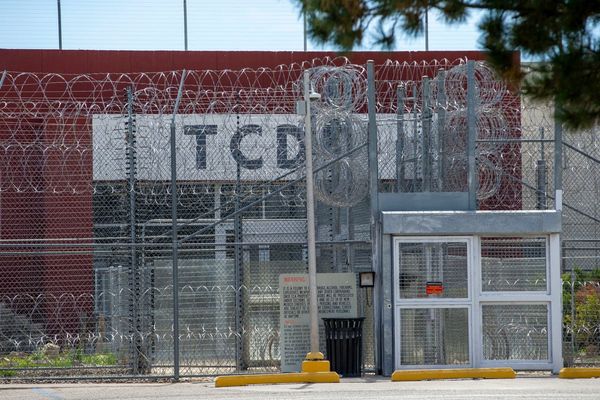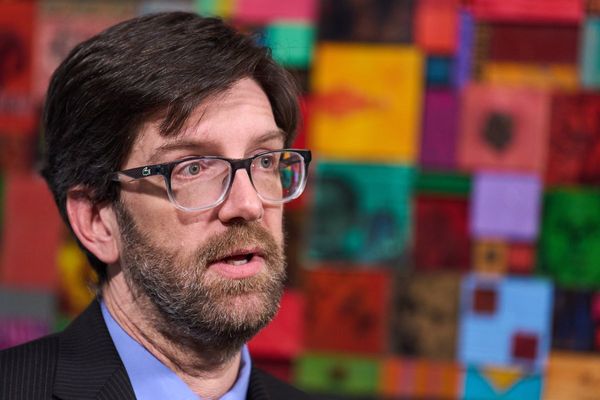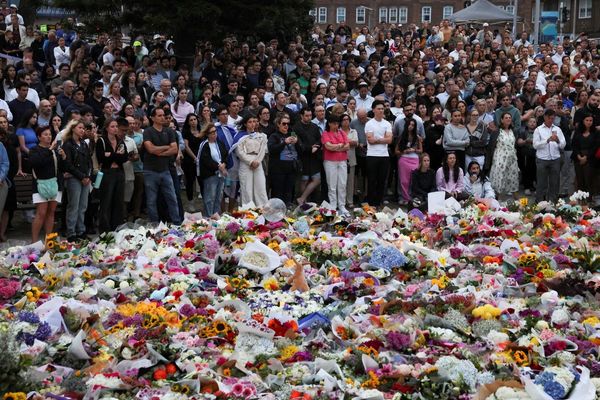The government of the Democratic Republic of Congo passed a law in January 2025 to lead efforts to establish the largest tropical forest reserve in the world. It will be set up as a 2,600km long green corridor the size of France – 540,000km² – situated in the Congo Basin.
The green corridor will follow the course of the Congo River, the world’s second largest after the Amazon, which meanders 4,374km in a long arc through central Africa. The river gets its water from draining a huge 3.6 million km² area (a watershed) where the rain falls. This massive area is called the Congo Basin.
The Congo Basin straddles ten countries: Angola, Burundi, Cameroon, Central African Republic, Democratic Republic of Congo, Gabon, Republic of Congo, Rwanda, Tanzania, and Zambia.
The Democratic Republic of Congo, with 10% of the planet’s known plant species, is right at the centre of the Congo Basin. Its rainforests extend for 1.55 million km², housing 50% of Africa’s tropical forests.
However, the country has also been gripped by conflict. This has already disrupted conservation in the protected areas in North and South Kivu (Kahuzi-Biega National Park, Virunga National Park). Conflict creates a void in law enforcement which complicates the nature conservation work in the parks.
We are scientists who study the biogeochemical cycles and social and economic dynamics of land use change of the Congo Basin. Together with environmental economist Glenn Bush of the US-based Woodwell Climate Research Center, who co-authored this article, we’ve been investigating different aspects of sustainable agriculture, greenhouse gas fluxes, and soil erosion in the Congo Basin.
The green corridor will be very important in connecting different ecosystems so that animals can move freely (to escape predators and look for new food sources). Many are unique to the Congo Basin, like the bonobo great ape, the Congo peafowl, and the mysterious okapi – the giraffe’s only living relative, first photographed in the wild in 2008.
The Congo Basin also regulates the global climate, absorbing 1.5 billion tons of greenhouse gas emissions per year. It stores three years’ worth of the entire world’s greenhouse gas emissions in its 60,000km² of peatlands (marshy areas in which dead plants don’t decompose fully, but break down into a soft mass that absorbs carbon dioxide). The green corridor is key in preventing further global warming.
The mysteries of the Congo Basin forest
About 1.45 million km² or 67% of the Democratic Republic of Congo is made up of old growth primary forest – large, old trees that have never been disturbed by humans. This pristine forest is so large and under-researched that major scientific discoveries are still happening there. For example, the world’s largest peatland complex, which started forming 10,600 years ago, was only identified there in 2017.
The greenhouse gas fluxes of Congo’s tropical forests were also analysed for the first time only in 2022. The darkest blackwater river on Earth (the Ruki river) was only reported in 2023.
Read more: Congo's blackwater Ruki River is a major transporter of forest carbon – new study
There is much still left to discover. Scientists still do not know just how many species live in the Congo Basin or how much more carbon could be stored by its trees and plants. Understanding and protecting this critical region is paramount.
Current threats to the Congo Basin
Between 2000 and 2015, the most critical threat came from slash and burn farming. It’s a form of farming closely tied to the local conditions of poverty.
Cutting down trees to make charcoal that’s sold in distant cities is also a major problem; 87% of cooking in the Democratic Republic of Congo uses charcoal made from forest trees as a fuel.
Read more: Community forestry can work, but plans in the Democratic Republic of Congo show what's missing
Underfunding is another threat. Already, the Congo Basin doesn’t have the money to pay for adequate protection and monitoring services or enough game rangers. US president Donald Trump’s order to terminate 90% of the US Agency for International Development’s foreign projects may make things worse, because the agency funded the Central African Regional Program for the Environment’s 25 year Congo Basin forest protection project.
If the conflict spreads, that could derail the plans for the green corridor. Nature protection will become the least of people’s worries. The success of the corridor also depends on mobilising local people to implement community based conservation arrangements. If people are displaced by conflict, this will seriously disrupt community organising. Displaced people (local farmers and internal migrants) may also turn to forest products and wildlife to sustain themselves.
How the new green corridor will help
The green corridor will place an additional 15% of the Congo Basin and an extra 23% of the Democratic Republic of Congo under legal protection. More than 100,000 km² of this is old and undisturbed, pristine forest.
The green corridor has been designed to include community rights and sustainable resource use. The plan is for environmentally friendly jobs to be developed along the corridor for the 31.5 million people currently living there.
Read more: How we discovered the world's largest tropical peatland, deep in the jungles of Congo
This approach is based on a working model built up over decades around the country’s Virunga National Park, where local communities earn money for their work in protecting the environment. It will be vital for the governments involved in the green corridor to develop plans for sustainable agriculture, ecotourism, green energy, forestry, and sustainable extraction of minerals for the global green energy transition along the corridor.
What might derail the new plans
Education: A very wide range of technicians and scientists is needed to transfer technology and engage communities in the central government strategy at the local level. It’s not clear that all these skills are available.
Organisation: Huge, organised programmes will be needed to communicate the plan to the 31.5 million people living in the green corridor, especially to get their buy-in to protect the area.
Attracting investments: A vast amount of private and public financing will be needed to set up the green corridor. Selling carbon credits is likely to be an idea put forward to raise these funds. Carbon credits are where polluting companies from anywhere in the world can contribute money to protect the Congo Basin and gain credits to offset their pollution elsewhere. These schemes can generate money to support sustainable development with local communities. However, if they are badly governed and reduce local communities’ access to land, they may end up not delivering lasting ecological or social benefits. Strong scientific evidence and proper data will be needed to show that they are both benefiting the environment and supporting local communities.
Conflict: The recent conflict in eastern Democratic Republic of Congo means that it will continue to be very difficult for green corridor staff to work in the region and move around safely.
The government must rapidly develop a strategy that sets out how the green corridor will be paid for, established and operated. This strategy should ensure that plans for the green corridor are carried out with integrity and guided by science. Everyone living and working in the area, and those affected by the plan, must be involved so that forest landscapes can be protected for people and nature.
Nothing to disclose.
Johan Six and Matti Barthel do not work for, consult, own shares in or receive funding from any company or organisation that would benefit from this article, and have disclosed no relevant affiliations beyond their academic appointment.
This article was originally published on The Conversation. Read the original article.







